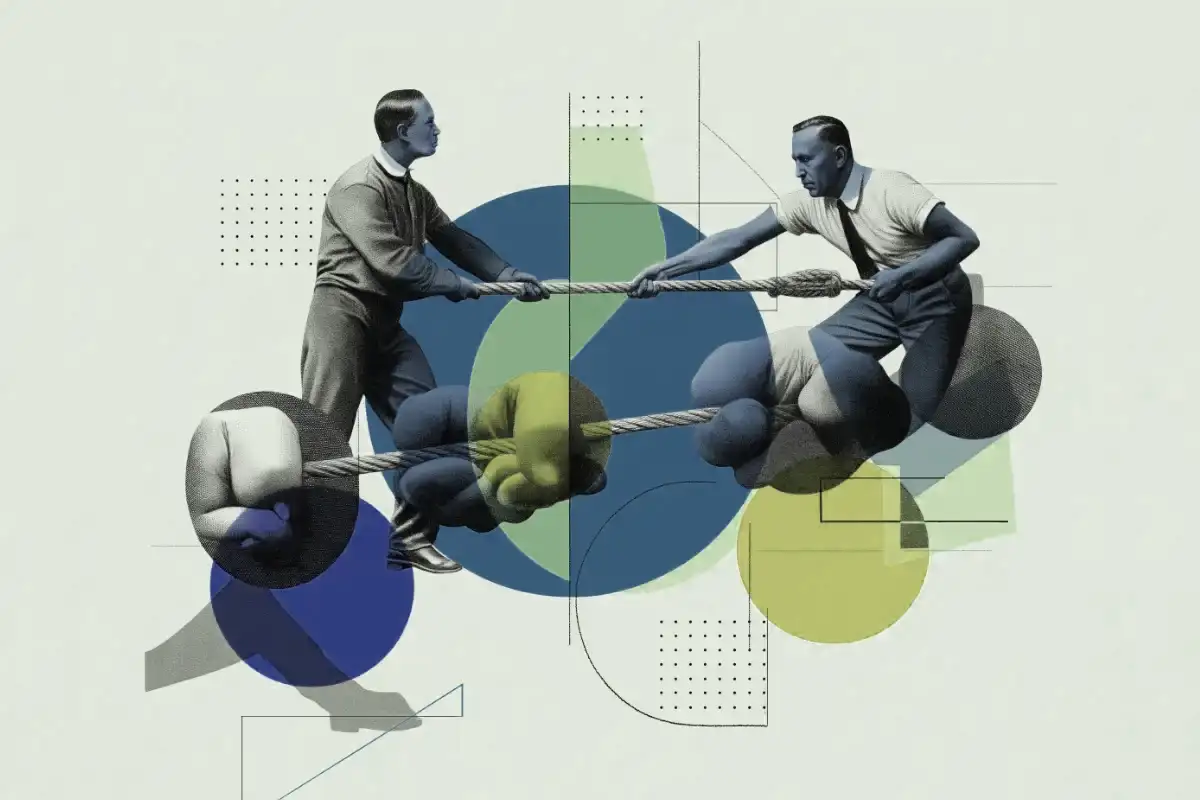My carefully crafted interface was about to be thrown to the wolves, and I thought I might throw up on my keyboard.

Design reviews have a special way of transforming otherwise reasonable colleagues into ruthless critics and turning confident designers into quivering messes. But after surviving hundreds of these sessions (some more gracefully than others), I've learned that design reviews don't have to be emotional bloodbaths where good ideas and friendships go to die.
The problem isn't the review
it's the approach.
Most designers approach reviews like they're taking an exam. We position ourselves for judgment rather than collaboration. We become defensive parents protecting our precious pixel babies.
This fundamental misunderstanding turns what should be constructive into something that feels deeply personal. As one design leader says, "The design review is not a me-vs-you exercise. Do not act like stakeholders are there to judge your work".
When I started running reviews at my company, I'd walk away either deflated by criticism or annoyed that "they just didn't get it." Neither feeling was particularly productive.
Preparation:
Your secret weapon.
After one particularly fierce session where my UI for a healthcare application got picked apart like vultures on roadkill, I completely overhauled my approach.
First, I renamed our sessions. Words matter, and "critique" comes with baggage. Consider calling them "design reviews" instead. Less intimidating, more collaborative.
Next, establish a regular cadence. We now run ours every Wednesday at 2 pm. This predictability removes the "big reveal" pressure and creates a rhythm of continuous improvement.
Keep your numbers manageable. Jeff Patton smartly suggests "dinner party size" rather than "student party size". Eight people maximum have worked perfectly for us.
Diversity in your review panel isn't politically correct window dressing-it's strategic brilliance. Different perspectives catch different issues and spark creative solutions.

During the review:
Frameworks save friendships.
The meeting starts. Your palms are sweaty. Mom's spaghetti... Wait, wrong script.
Begin by explaining your problem, not just showing the solution. For example, you could say "Patients were abandoning the appointment booking flow at 64%. Here's why..."
Be crystal clear about what feedback you want and-equally important-what you don't. "Today we're focusing on the information architecture, not the colour scheme" keeps conversations productive.
Try the "I Like, I Wish, What If" framework. This simple structure transforms vague opinions into actionable feedback. Then, if the marketing director says, "I wish patients could see their previous appointments while booking," that becomes a valuable feature addition rather than a criticism.
Remember that feedback is a gift, not a personal attack. IS there someone who always finds problems in your designs? Consider that they're helping you build something better.
Receiving feedback:
Your design isn't you.
In the early days of my career, I was very passionate and single-minded about my work. I would fight hard for my solution and push back against perceived criticism. However, over time, I realised this wasn't about me.
Decoupling your self-worth from your design is the most important mental shift you can make.
When someone suggests a change, resist the urge to defend immediately. Instead, get curious. Ask "What problem are you seeing that this change would solve?" This shifts the conversation from subjective preferences to objective problem-solving.
Document everything in real-time. We use a shared doc where everyone can see feedback being captured. This transparency reduces misunderstandings and prevents important insights from evaporating.
After the review:
Where the real magic happens.
The aftermath of a design review is where projects either evolve or implode. Our healthcare app breakthrough came during the quiet reflection after a particularly challenging review.
Sort feedback into categories: must-address, consider, and acknowledge-but-deprioritise. This prevents you from treating all feedback as equally important.
Follow up with key stakeholders individually. Some of our best solutions emerged from quiet one-on-ones where people felt more comfortable elaborating on their concerns.
Share how you've incorporated feedback before the next review. This closes the loop and shows that the process matters.
Unexpected benefits:
When good reviews occur.
When we transformed our review process, something unexpected happened. The quality of our work improved dramatically, but so did our team dynamics.
Developers started joining design sessions earlier. Marketing felt heard and stopped making last-minute demands. Our products launched faster with fewer revisions.
Most surprisingly, I started looking forward to design reviews. They became less about defending work and more about collaborative problem-solving.The solution came not from my original design, but from the collective intelligence of our review process.
The design review doesn't have to be a gauntlet you run through while colleagues throw tomatoes. A proper structure and mindset become the secret weapon that transforms good designs into great ones and keeps your workplace relationships intact and thriving.
Now, if you'll excuse me, I have a design review to prepare for. And this time, I'm looking forward to it. 🙃

